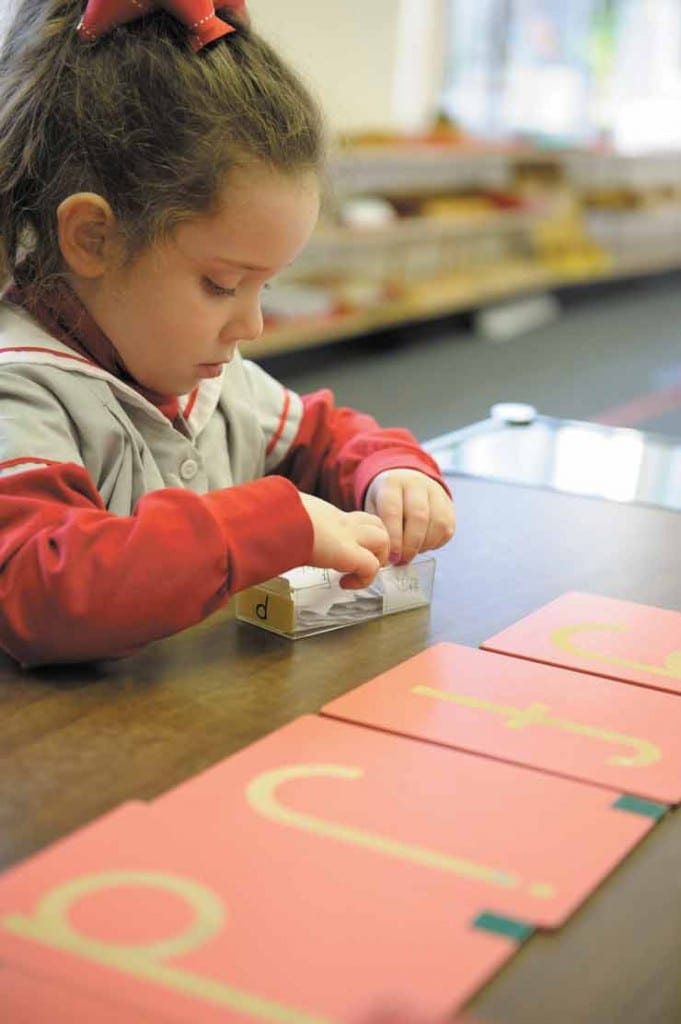Visitation Academy’s primary and Montessori students are busy in the greenhouse planting oregano, basil, peppers, onions and parsley. Far from a random assortment of vegetables, the students are ‘growing’ their end-of-the-year pizza party. “We want them to understand the general principles of how food is grown and for them to realize it’s like a pizza—it doesn’t just come from a freezer box,” says Montessori teacher Tracey Allen.
Hands-on learning is just one part of Visitation’s Montessori program, which was introduced to the school 50 years ago. Visitation sisters, at the time part of a cloistered community, received special permission to leave the convent to attend the American Montessori Society’s June 1962 seminar in Connecticut. The program, available to boys and girls ages toddler to kindergarten, was the first of its kind in St. Louis. “We completely embrace the Montessori philosophy because we see the success and happiness of the students, as well as the care and compassion in the room,” says lower school principal Margaret Karl.
Hallmarks of a Montessori education include mixed-age classrooms, freedom of movement, and respect for the whole child’s development. Class rules provide structure, but within that structure, children are free to work alone or with others, and can always work at their own pace, says Allen. “When people hear ‘Montessori,’ they think there’s no rules. This couldn’t be further from the truth. We have ground rules and respect for the children, the adults and the classroom environment.”
This respect is in evidence each morning at the entrance to the school, where Karl stands to greet students. When the children reach their classrooms, their teacher also says hello and shakes their hands. “We believe every child needs to feel loved and that they will learn better in an environment that cares about them,” Karl says. “The morning greeting gives the teacher an opportunity to look each child in the eye and see whether they are having a good or bad day. We care for the whole child and that is the starting point.”
Children spend their days in carefully prepared environments, where they engage in self-directed learning and work with education tools specifically designed for the Montessori program. “There’s a purpose for every activity in the room, with many activities promoting fine and gross motor skills,” Allen says. Students learning numbers might manipulate beads on an abacus. When they learn about the alphabet, they play with sandpaper letters, tracing the shapes with their fingers.
Above all, Visitation’s Montessori program emphasizes an individualized education, appealing to a broad range of learning styles, says Karl. “They’re not all sitting and learning the same thing at the exact same time,” Allen says. “We look at individualized needs, so if there is a child fascinated by language, maybe they’re learning reading, but are one of the younger students in the room. It’s not a forced learning based on age, but rather on the interests and abilities of each child.”
Photo by Visitation Academy
Pictured: Trudy Redmond
Visitation Academy is an independent, Catholic school offering a coeducational early childhood program and an all-girls environment in grades one through 12. For more information, visit visitationacademy.org or call 314.625.9100.
